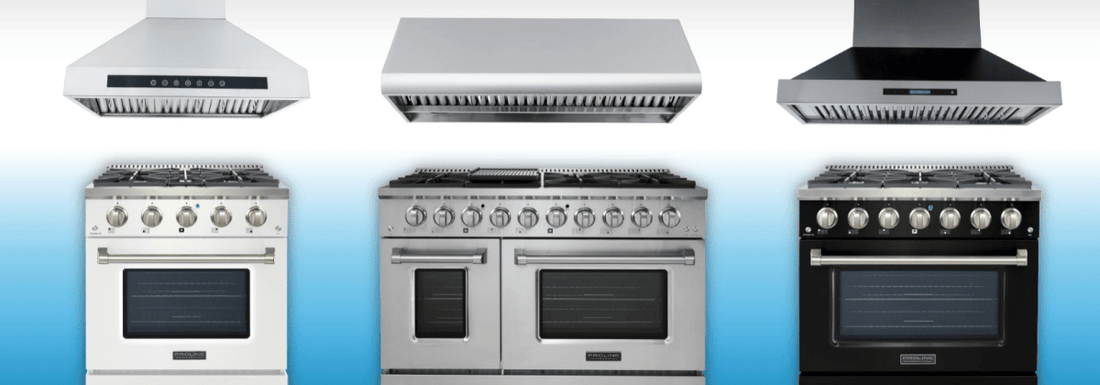Table of Contents
Why venting matters: Gas stoves produce harmful particles and gases that can accumulate in your home, causing health issues ranging from headaches to serious respiratory problems.
Improve Health and Safety
Harmful substances produced by gas stoves:
- PM 2.5 particles: Tiny particles that penetrate deep into lungs
- Nitrogen oxide and dioxide: Respiratory irritants
- Formaldehyde: Known carcinogen
- Carbon monoxide: Invisible, odorless, potentially deadly
- Safe range: 5-15 ppm (with proper ventilation)
- Poor ventilation: 30-50+ ppm
- 15-30 ppm symptoms: Headaches, shortness of breath, nausea
- 30+ ppm symptoms: Severe nausea, disorientation, migraines
- High levels: Can lead to comas or death
Common symptoms from poor ventilation: Coughing, sneezing, eye/nose/throat irritation.

Reduce Cooking Odors
The problem: In poorly ventilated homes, cooking odors accumulate quickly and can linger for days or weeks.
The solution: A range hood removes both harmful contaminants and cooking odors, keeping your kitchen fresh and your air clean. This is why when people ask "do gas stoves need to be vented," the answer should always consider both health and comfort factors.
U.S. Requirements for Gas Range Venting
State-Specific Requirements:
Colorado:
- Generally no venting requirement
- Plastic vent ducts must pass 5 PSI air test
- Licensed professional review required for compliance
California:
- Required: 100 CFM minimum or 5 air exchanges per hour
- Applies to: New residential areas, remodels, or additions 1,000+ sq ft
- Recommendation: Purchase a range hood to satisfy this requirement
Common Safety Questions
Is it safe to have a gas stove without a vent?
Best practices:
- Always turn on range hood when cooking
- High heat or long cooking: Use max speed
- Regular cooking: Low speeds are sufficient
Why does a gas range not need to be vented?
Common misconception: While gas ranges produce "small" amounts of contaminants, these build up over time in poorly ventilated homes.
The reality: Carbon monoxide, formaldehyde, and other compounds can accumulate for days or weeks, creating serious health hazards. This is exactly why the question "do gas stoves need to be vented" is so important for homeowner safety.
Do you need an exhaust fan for a gas stove?
How Much CFM Do You Need?
Total BTUs ÷ 100 = Minimum CFM Required
CFM Guidelines by Range Size:
- 30" or 36" gas range: 900 CFM typically sufficient
- 42", 48", 54", or 60" ranges: 1200-2000 CFM required
- Example: 60,000 BTU range ÷ 100 = 600 CFM minimum
Finding BTU information: Check your owner's manual or contact the manufacturer. Most manuals are available online.
Types of Range Hoods
Range hood options for gas ranges:
- Wall mount hoods: Most common, mounted against wall
- Island hoods: For kitchen islands, require higher CFM
- Under cabinet hoods: Space-saving, fits under cabinets
- Outdoor hoods: For outdoor kitchens
- Insert range hoods: Built into custom cabinetry
Best Range Hoods for Gas Stoves
Range hood selection factors:
- Quality of materials: Stainless steel preferred
- CFM rating: Match to your stove's BTU output
- Efficiency: Energy Star ratings available
- Noise level: Measured in sones
Professional Tip: When considering whether gas stoves need to be vented, remember that range hoods vary widely in quality. Choose one that matches your cooking style and kitchen layout for optimal performance.
Need help choosing the right range hood for your gas stove?
View Our Complete Range Hood Buying Guide












